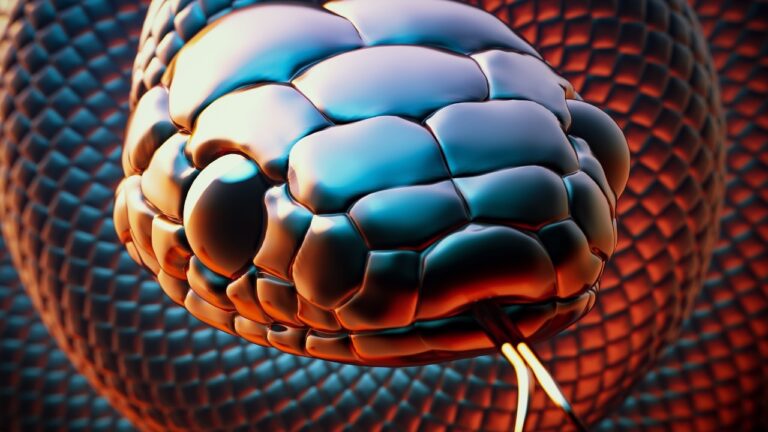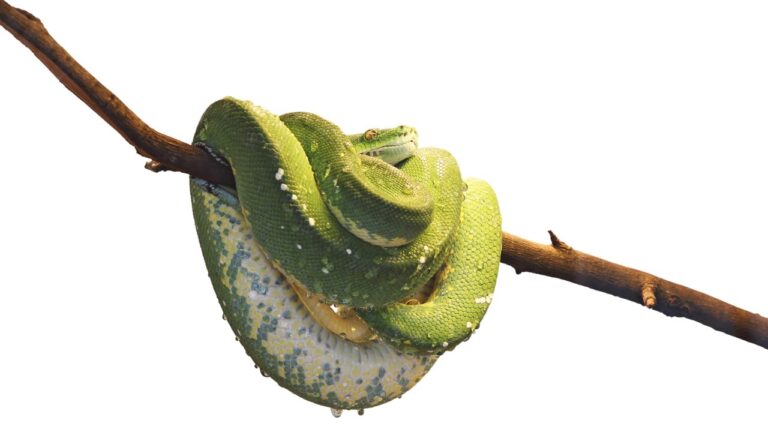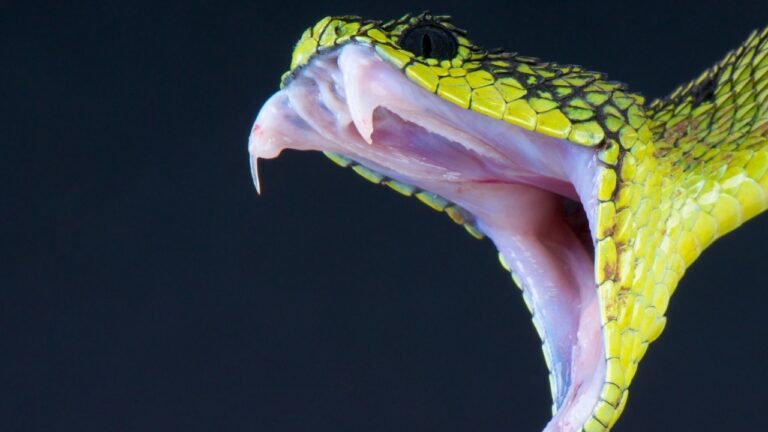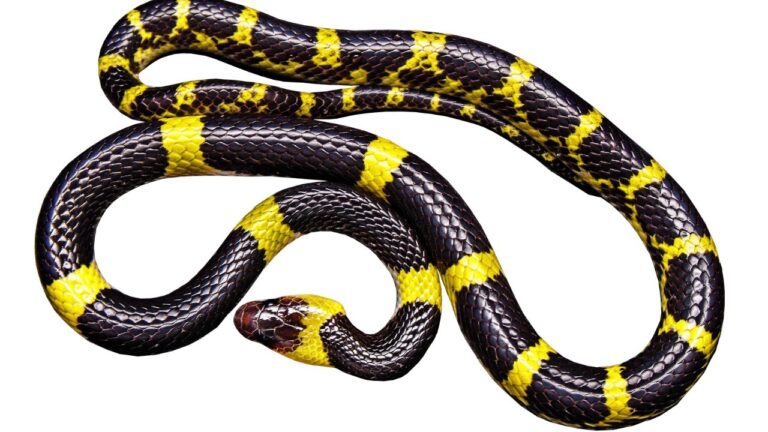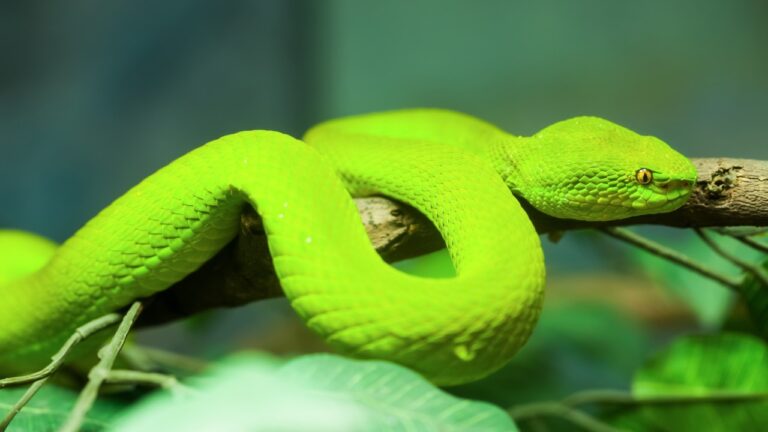Snake Feeding Guide: Essential Nutrition Basics for Snake Owners
Importance of proper snake nutrition
When it comes to keeping a snake as a pet, there are several crucial aspects to consider. From creating the ideal enclosure to providing the right temperature and humidity, every detail matters. However, one aspect that often gets overlooked is the snake’s nutrition. Proper nutrition is of utmost importance for the health and well-being of your scaly friend.
Snakes are fascinating creatures with unique dietary needs. As carnivorous reptiles, they require a diet primarily composed of meat. However, the specific requirements differ based on the species. Some snakes prefer live prey, while others can thrive on frozen/thawed or pre-killed options. Understanding these dietary preferences and tailoring their meals accordingly is essential for their overall health.
Proper snake nutrition is vital for several reasons. Firstly, it ensures the snake receives the necessary nutrients to support its growth and development. Just like humans, snakes require a balanced diet to maintain optimal health. By providing them with the right food, you are setting them up for a long and healthy life.
Secondly, a well-balanced diet improves the snake’s immune system, making them more resistant to diseases and infections. Snakes that are malnourished or lacking essential nutrients may be more susceptible to illnesses, which can lead to a range of health issues.
Lastly, maintaining a proper diet is crucial for the snake’s overall digestion and well-being. The digestive system of a snake is specifically designed to handle their carnivorous diet. By offering them appropriate prey items, you are allowing their digestive system to function optimally, preventing any digestive complications.
In this comprehensive snake feeding guide, we will delve into the various aspects of snake nutrition, including their dietary needs, feeding schedules, choosing the right food, feeding techniques, and safety tips. We will also highlight common mistakes that snake owners should avoid to ensure their pet’s well-being.
So, if you’re ready to provide your slithery companion with the best possible nutrition, let’s embark on this informative journey together. Whether you’re a first-time snake owner or an experienced reptile enthusiast, this guide will equip you with the knowledge you need to nourish your snake properly. Let’s dive in and unravel the secrets of snake nutrition!
Understanding Snake Diets
Snakes, with their slithering grace and mesmerizing beauty, possess a carnivorous nature that sets them apart from other creatures. These remarkable reptiles have evolved to thrive on a diet primarily consisting of other animals. Understanding the intricacies of snake diets is essential for snake owners seeking to provide optimal nutrition for their scaly companions.
Carnivorous Nature of Snakes
At the heart of snake nutrition lies their carnivorous instinct. These serpents have evolved over millions of years to become formidable predators, relying on their sharp fangs and incredible swallowing abilities to consume their prey whole. This predatory nature is deeply ingrained in their biology and digestive systems.
Types of Snake Diets
When it comes to feeding your snake, you have several options to choose from. The most commonly practiced methods include live feeding, frozen/thawed feeding, and pre-killed feeding.
Live feeding involves offering live prey to your snake, allowing it to display its natural hunting behaviors. While some snake owners prefer this method to stimulate their pet’s instincts, it can pose certain risks. Live prey has the potential to fight back and injure the snake, and there is also a chance of the prey transmitting parasites or diseases.
On the other hand, frozen/thawed feeding provides a safer alternative. The prey items, such as rodents, are euthanized and then frozen before being thawed out for feeding. This method eliminates the risks associated with live feeding while still providing the snake with the opportunity to exhibit its natural hunting behavior.
Lastly, pre-killed feeding involves offering prey that has been humanely euthanized prior to feeding. This method ensures the safety of both the snake and the prey, as well as providing convenience for snake owners who prefer not to deal with live or frozen prey.
It is important to note that the choice of diet may depend on the species of snake you own. Some snakes have specific dietary requirements that need to be met to ensure their overall health and well-being.
Understanding the nuances of snake diets is crucial for snake owners. By delving deeper into the nutritional needs of these captivating creatures, we can ensure that their diet supports their growth, vitality, and longevity. In the following sections, we will explore the specific nutritional requirements for different snake species and how to create a well-balanced diet for your scaly companion.
Continue reading: Nutritional Requirements for Snakes
Nutritional Requirements for Snakes
Snakes, with their diverse species and unique dietary needs, require careful consideration when it comes to their nutrition. Understanding the different dietary needs based on species and maintaining a balance of proteins, fats, and vitamins is essential for the overall health and well-being of these fascinating creatures.
Each snake species has its own specific dietary requirements, and it’s crucial to cater to those needs to ensure proper growth and development. Some snakes are strictly carnivorous, while others may include a small amount of vegetation in their diet. It’s important for snake owners to research and understand the specific dietary preferences of their snake species.
Proteins are a vital component of a snake’s diet. They provide the necessary building blocks for muscle growth and repair. The primary source of protein for snakes is their prey. Snakes consume a variety of prey items, including mice, rats, birds, and even other reptiles. These prey items are rich in proteins that are essential for maintaining the snake’s overall health and vitality. Ensuring that the snake’s diet includes an adequate amount of protein is crucial for its well-being.
In addition to proteins, fats play a significant role in a snake’s nutrition. Fats are a concentrated source of energy and provide insulation and protection for vital organs. Snakes store fat reserves, particularly during periods of hibernation or in preparation for the breeding season. However, it’s important to note that excessive fat accumulation can lead to health issues. Maintaining an appropriate balance of fat in a snake’s diet is essential to prevent obesity and related health problems.
Vitamins and minerals are also essential for a snake’s overall health. These micronutrients are involved in various physiological processes, including bone development, immune function, and organ function. While snakes obtain some vitamins and minerals from their prey, it is important for snake owners to provide a balanced diet that includes a variety of prey items to ensure their snakes receive all the necessary nutrients.
To maintain an optimal nutritional balance, snake owners should consider the size and age of their snakes when determining the feeding schedule. Younger snakes typically require more frequent feedings to support their rapid growth, while adult snakes may require feeding less often. It’s important to establish a feeding schedule that aligns with the snake’s species, age, and activity level. A well-planned feeding schedule ensures that the snake receives the necessary nutrients without overfeeding or underfeeding.
In conclusion, understanding the nutritional requirements for snakes is crucial for snake owners. Providing a well-balanced diet that meets the specific needs of each snake species is essential for their overall health and well-being. By offering a variety of prey items that are rich in proteins, maintaining an appropriate balance of fats, and ensuring the intake of essential vitamins and minerals, snake owners can ensure their scaly companions thrive in captivity.
For more information on snake nutrition and feeding, check out our comprehensive guide on snake nutrition.
Feeding Schedule
Frequency of feeding based on age and species
Adjusting feeding schedule for growth and activity level
Establishing a proper feeding schedule is essential to ensure the health and well-being of your slithery companions. Snakes, being cold-blooded creatures, have unique dietary requirements that vary depending on their species and life stage. By understanding the frequency of feeding based on age and species, as well as adjusting the feeding schedule for growth and activity level, you can provide your snake with the nutrition it needs to thrive.
When it comes to the frequency of feeding, there are several factors to consider. First and foremost, age plays a crucial role. Juvenile snakes, still in the early stages of development, have higher metabolic rates and therefore require more frequent meals. They typically need to be fed every 5 to 7 days to support their rapid growth and energy demands. As they reach adulthood, the frequency of feeding can be gradually reduced to once every 10 to 14 days. Keep in mind that these guidelines are general recommendations, and it’s important to research the specific requirements of your snake’s species for more accurate feeding intervals.
In addition to age, the species of your snake also influences its feeding schedule. Different snake species have varying metabolic rates and activity levels, resulting in distinct dietary needs. Some species, such as ball pythons, are known for their relatively slow metabolism and can thrive on less frequent meals. Conversely, more active species, like corn snakes, may require more regular feedings to meet their energy requirements. Familiarize yourself with the natural feeding habits and metabolic rates of your snake’s species to determine the most appropriate feeding frequency.
While age and species provide a foundation for establishing a feeding schedule, it’s crucial to adapt it further based on your snake’s growth and activity level. Snakes undergo growth spurts, especially during their juvenile phase, which may require more frequent feeding to support their development. Conversely, if your snake is displaying signs of reduced activity or has entered a period of decreased appetite, it may be necessary to adjust the feeding schedule accordingly. Monitoring your snake’s weight and behavior can provide valuable insights into whether adjustments are necessary.
Remember, a well-balanced diet is just as important as the feeding schedule itself. Providing your snake with appropriate prey items that meet its nutritional needs is crucial for maintaining optimal health. Ensure that the prey items are of the correct size, allowing your snake to consume them without difficulty or risk of injury. For more information on suitable prey options and sizing, refer to our previous article on snake food.
In conclusion, establishing a feeding schedule that considers the frequency of feeding based on age and species, as well as adjusting it for growth and activity level, is vital for the well-being of your snake. By providing regular and appropriately sized meals, you can ensure that your slithering companion receives the nutrition it requires to thrive. Remember, a healthy snake is a happy snake!
Next up: Let’s delve deeper into the selection of the right food for your snake in the section on ‘Choosing the Right Food’. Stay tuned!
Internal links: snake food
Choosing the Right Food
When it comes to feeding your beloved serpent, choosing the right food is of utmost importance. Selecting suitable prey options for your snake species and ensuring proper sizing of prey items are crucial for their overall health and well-being.
Different snake species have varying dietary needs, so it’s essential to familiarize yourself with their natural diet. Snakes are carnivorous creatures, and their diets primarily consist of other animals. However, the specific prey options can vary depending on the species. Some snakes prefer rodents like mice and rats, while others may feed on birds, fish, or even other reptiles.
To determine the ideal prey for your snake, it is recommended to research and consult reputable sources such as snake food guides or experienced snake owners. These resources can provide valuable insights into the preferred prey options for different snake species. Understanding your snake’s natural diet will help you provide them with a nutritionally balanced meal.
In addition to selecting the appropriate prey, proper sizing of prey items is crucial to ensure the snake can consume its meal safely. The size of the prey should be proportionate to the snake’s head size. Prey items that are too large can pose a choking hazard or lead to digestive issues for the snake. On the other hand, prey items that are too small may not provide adequate nutrition for the snake.
To determine the correct prey size, consider the diameter of your snake’s body as a general guideline. The prey item should be approximately the same size or slightly larger than the widest part of your snake’s body. This ensures that the snake can comfortably swallow its meal without any complications.
By selecting suitable prey options for your snake species and ensuring proper sizing of prey items, you are providing them with a well-balanced and nutritious diet. Remember, a healthy diet is essential for their growth, energy levels, and overall vitality.
For more information on snake nutrition and feeding, check out our comprehensive guide on snake nutrition.
Feeding Techniques and Safety Tips
When it comes to feeding your snake, there are a few techniques and safety tips that every snake owner should be aware of. Proper feeding methods not only ensure the snake gets the nutrition it needs, but also help maintain the safety of both the snake and the owner. Additionally, knowing how to handle potential feeding issues is crucial for the well-being of your scaly companion. So, let’s dive into the world of snake feeding techniques and safety tips.
Feeding Methods
One of the primary feeding methods for snakes is using tongs or forceps. This method allows you to offer prey items to your snake without the risk of accidental bites. By gripping the prey with the tongs, you can mimic natural movement, triggering the snake’s feeding response. This method is particularly useful when feeding live prey, as it minimizes the chance of injury to both the snake and the owner.
Another technique that can be employed is using a feeding container. This method involves placing the snake and its prey in a separate container for feeding. This not only reduces the risk of substrate ingestion during feeding but also helps prevent the snake from associating the owner’s hand with food. Feeding containers can be easily cleaned and sanitized, ensuring a hygienic feeding environment for your snake.
Ensuring Safety
Safety should always be a top priority when feeding your snake. Whether you choose to use tongs or a feeding container, make sure to maintain a safe distance between your hand and the snake’s head. Snakes have excellent striking abilities, and even non-venomous species can deliver a painful bite if they feel threatened.
It’s also important to create a calm feeding environment. Snakes are sensitive to stress, and any disturbances during feeding can lead to regurgitation or refusal to eat. Find a quiet, secluded area where your snake feels secure and free from distractions. This will help facilitate a smooth feeding experience for both you and your scaly friend.
Handling Potential Feeding Issues
Sometimes, snakes may refuse to eat or experience regurgitation after a meal. These are common feeding issues that snake owners may encounter. If your snake refuses to eat, it could be due to various factors such as stress, improper temperature, or illness. It’s essential to address the underlying cause and make any necessary adjustments to their environment or feeding schedule.
Regurgitation, on the other hand, can occur when a snake’s digestive system is overwhelmed or when inappropriate prey size is fed. If your snake regurgitates, it’s crucial to give them ample time to recover before attempting to feed again. Always consult a veterinarian if regurgitation persists or if you have any concerns about your snake’s health.
In conclusion, mastering the right feeding techniques and adhering to safety measures is vital for the well-being of both you and your snake. By employing methods like tongs or feeding containers, you can minimize the risk of accidental bites and create a safe feeding environment. Remember to consider your snake’s individual needs and handle any potential feeding issues with care. With the right approach, feeding time can become a positive and nourishing experience for your scaly companion.
Continue reading about snake nutrition and snake feeding schedule for a comprehensive understanding of how to provide your snake with a balanced and healthy diet.
Common Mistakes to Avoid
Ensuring the proper nutrition of your snake is crucial for their overall health and well-being. However, even with the best intentions, snake owners can sometimes make mistakes when it comes to feeding their slithering companions. In this section, we will discuss some common mistakes to avoid to ensure that your snake receives the nutrition it needs to thrive.
Overfeeding
One of the most common mistakes snake owners make is overfeeding their reptilian friends. It can be tempting to offer your snake a meal whenever they show signs of hunger, but this can lead to obesity and other health issues. Snakes have a slow metabolism, and they don’t require frequent meals like other animals. Overfeeding can put unnecessary strain on their digestive system and lead to problems such as regurgitation or fatty liver disease.
To avoid overfeeding, it’s important to establish a feeding schedule based on your snake’s species and age. Research the specific dietary needs of your snake and consult a veterinarian if you’re unsure. By providing the appropriate amount of food at regular intervals, you can ensure that your snake maintains a healthy weight and avoids the negative consequences of overfeeding.
Feeding Inappropriate Prey
Another common mistake snake owners make is feeding their snakes inappropriate prey. Different snake species have different dietary requirements, and it’s important to provide them with prey that aligns with their natural diet. For example, some snakes are strictly carnivorous and require a diet of rodents, while others may include insects or even other reptiles in their diet.
Feeding your snake inappropriate prey can lead to nutritional deficiencies or digestive issues. It’s crucial to research your snake’s specific dietary needs and offer them prey that fulfills those requirements. If you’re unsure about the suitable prey options for your snake, consult a reptile specialist or veterinarian who can provide guidance.
Inadequate Prey Size
Providing your snake with prey that is too large or too small can also be a mistake. Snakes have different jaw structures and swallowing capabilities, and offering prey that is too large can lead to choking or other serious health problems. On the other hand, prey that is too small may not provide the necessary nutrition for your snake, leading to deficiencies and stunted growth.
It’s important to choose prey items that are appropriately sized for your snake. The size of the prey should be slightly larger than the snake’s widest girth to ensure that it can be swallowed comfortably. If you’re unsure about the proper sizing of prey items for your snake, consult a knowledgeable source or veterinarian for guidance.
By avoiding these common mistakes, you can provide your snake with a healthy and balanced diet that promotes their overall well-being. Remember to do your research, establish a feeding schedule, and provide appropriate prey items in the correct size. Your snake will thank you with a long and happy life.
Continue reading about snake nutrition and discover more tips for ensuring your snake’s dietary needs are met.
Conclusion
In conclusion, ensuring proper nutrition for your snake is crucial for its overall health and well-being. By understanding the carnivorous nature of snakes and the different types of snake diets, you can provide your scaly friend with the nutrients it needs to thrive. Remember to consider the specific dietary requirements of your snake’s species, striking a balance of proteins, fats, and vitamins.
Establishing a feeding schedule that aligns with your snake’s age and species is essential. As your snake grows and becomes more active, you may need to adjust the feeding schedule accordingly. This will help maintain a healthy weight and prevent overfeeding, which can lead to obesity and related health issues.
When it comes to choosing the right food for your snake, research the suitable prey options for its species. Ensure that the prey items are of the appropriate size to prevent any digestive issues. Offering a variety of prey can also help replicate the natural diet of wild snakes.
Feeding techniques and safety tips are also important to consider. Utilizing feeding tools like tongs or feeding containers can help minimize the risk of accidental bites or injuries. It’s crucial to prioritize safety for both you and your snake during feeding sessions.
While it’s common for snakes to refuse food occasionally or regurgitate prey, it’s essential to monitor these occurrences and address any potential issues. Consulting with a veterinarian specializing in reptiles can provide valuable insight and guidance in such situations.
To avoid common mistakes, ensure you are not overfeeding your snake, as this can lead to obesity and other health complications. Feeding inappropriate prey or prey that is too large can also pose risks to your snake’s digestive system. By being mindful of these common pitfalls, you can maintain optimal nutrition for your snake.
Remember, each snake is unique, and it’s important to tailor their diet and feeding routine to their specific needs. By providing a balanced and varied diet, you are helping your snake thrive and live a healthy life.
For more information on snake nutrition, feeding schedules, and other related topics, visit SerpentSuppers.com. Happy feeding!


